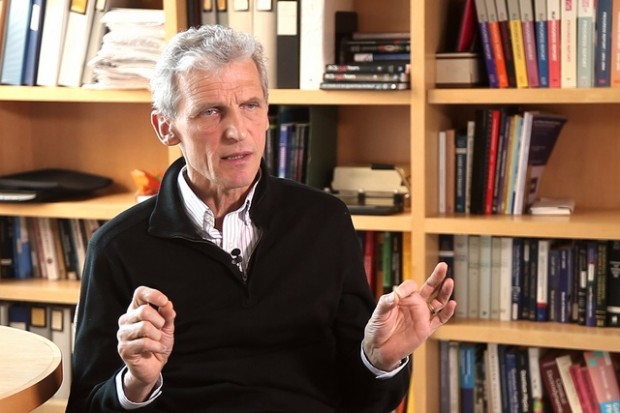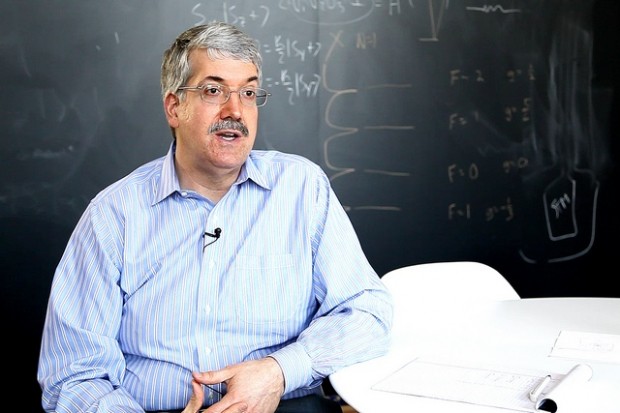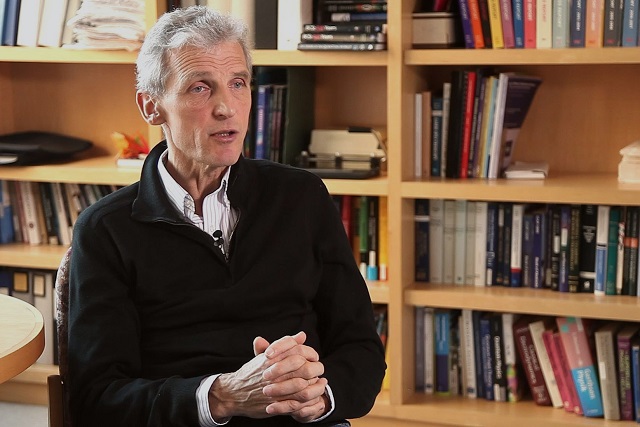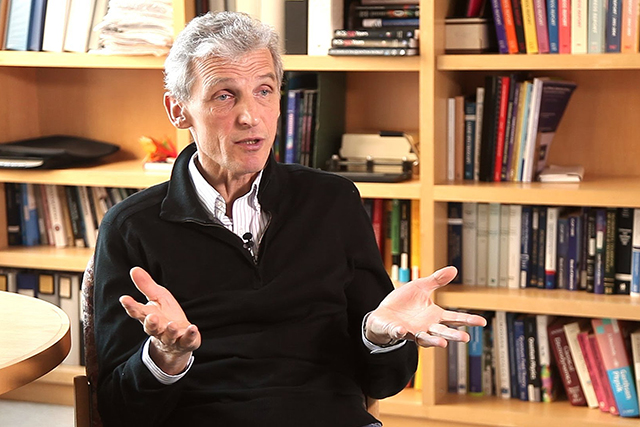Superfluidity
Physicist Marzena Szymanska on ultracold atoms, broken symmetry, and photonic superfluids
videos | July 23, 2018
The first question we can ask is what are superfluids? We know one manifestation of superfluidity, which is a flow without any friction. If you take a bucket of helium and you put it in a container, you can go up and outside the container’s walls, because there isn’t any friction between the container.
Superfluidity was discovered in helium-4 and it was soon explained in the framework of Bose-Einstein condensation because helium-4 atoms are bosons, they can form one microscopic quantum state called Bose-Einstein condensate. As such Bose-Einstein condensates are usually superfluids, although one is not an equivalent to another. In case of superfluid helium-4, the interactions are stronger than normally one would think of in superfluids. So, the picture is a little bit more complicated.
In general, we can say that because particles are occupying microscopic quantum state, they behave collectively. If they meet an obstacle, they do not scatter. If you want to think energetically, any excitations outside that microscopic objects are energetically not possible, because the relation between energy and momentum is modified in such a way that excitation is not possible. So, it explains the fact that superfluid flows without resistance.
Superfluids can be in the case of bosons, or they could also exist in the case of fermions. Fermionic superfluidity is connected to superconductivity, which was discovered in the case of electronic systems. However, fermionic superfluidity in case of liquid helium, helium-3, is more exotic than BCS-superconductivity, which was discovered in the case of electronic systems.

At the same time, they have non-zero spin. So, in S, you have one spin state, so you can associate another vector to their spin. You have one vector for the angular momentum, one vector for their spin. Now, when they are condensed, what happens is that you have a breaking of more than one symmetry of the system.
A concept of a broken symmetry is a very crucial concept in the theory of superfluids and for that matter – superconductants. What it means is that if you have a system, which is described by certain Hamiltonian, has a certain of energy, it is invariant. There are some properties of the system, which cannot be determined by the Hamiltonian. So, Hamiltonian is invariant, for example, under the direction of that spin, or the direction of this internal orbital momentum. In the case of the condensate is invariant under the choice of the phase. We know that condensate has a phase, but the Hamiltonian will not determine what phase it has. So, the system spontaneously breaks that symmetry.
In the case of the superfluids, – there are simple superfluids like helium-4 and complicated superfluids like helium-3 –more than one symmetry is broken at the same time. In case of helium-3 not only the phase symmetry is broken, but also the direction of the spin and the direction of the internal angular momentum. It can be broken in different ways. Either you can imagine this is an angular momentum and it breaks symmetry. It means that all my atoms are relying with internal angular momentum exactly in the same way, and the spin is relying also in the same way. This leads to an A-phase of the liquid helium. However, if I only fix the relative relations between the spin and internal angular momentum like that, only relative angle is fixed, but not each of the angles. Then it leads to the phase B of the superfluid.
The natural superfluids, such as helium-3 or helium-4, could be more or less understood with those frameworks. However, superfluidity research does not stop at just liquid helium. In particular, in the last few decades, ultracold atoms appeared as a new system to study superfluidity. There it is possible to create things, which are not really normally appearing in nature. For example, one can mix statistics. In case of cold atoms, you can mix. You can put bosons and fermions together, and you can create a superfluid state, which is at the same time a Bose-Einstein condensate state of the bosonic part and BCS-like state of the fermionic part, for example.
Another thing you can do is you can imbalance the system. You can put more particles of spin up and less particles of spin down. In the case of fermions that is quite a drastic thing to do, because, their Fermi-surfaces will be mismatched, so you will have much smaller Fermi-surface for one than for the other. That leads to quite exotic pairings and things, which are not well-understood.
You can also create states, which are going from BCS to BSCs. Starting from fermions, by changing an interaction by external magnetic field using Feshbach resonances, you can induce a strong pairing between fermionic atoms, which could undergo BCS-type of superfluidity. These are more tightly bounded pairs of molecules, which could undergo Bose-Einstein pair of condensation. So, you have this superfluidity, which can be in-between (in-between fermionic superfluidity and bosonic superfluidity). So, this is a whole new system to explore superfluidity in contrast to helium.A completely new system emerged even later than cold atoms, maybe in the last 10-15 years. It is that of photonic superfluids, exciton-polaritons, where the whole plateau of superfluid behavior has been observed by now, such as frictionless flow, vortices, system currents, flow via obstacles and so on. These superfluids are also quite different. This has to do with a fact that if you create almost ideal mirrors for the photons to be trapped, they are never completely ideal. The system is continuously decaying and you need to replenish polaritons from the other side. So, the system is out of equilibrium, is driven dissipative.
If you looked naively at the system, you would think it violates so-called Landau criterium. Strictly speaking, the system should not be superfluid, because it violates very important criterium proposed by Landau, which decides whether the systems are superfluids or not. But it actually turned out to be superfluid. So, we have to re-think and re-formulate the theory of superfluidity in recent years in the context of these new light-matter superfluids.
The field of superfluidity, although it has started over 100 years ago, is a very active field of research in various experimental realizations. More exotic orders are created, which are still connected with superfluidity. There are still a lot of open questions to be answered there.






























